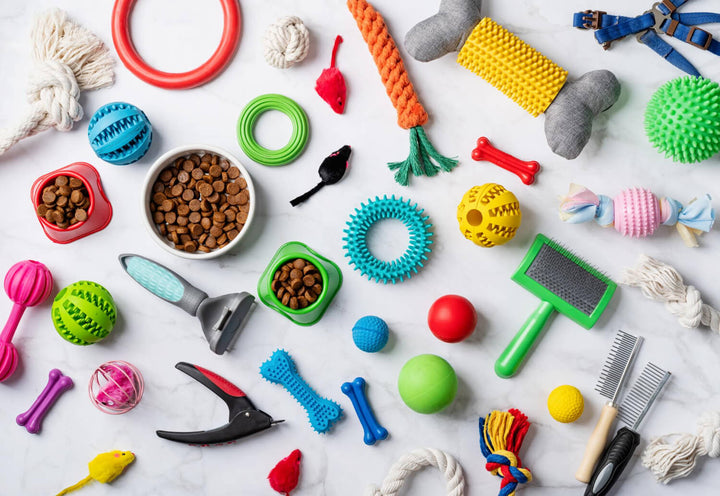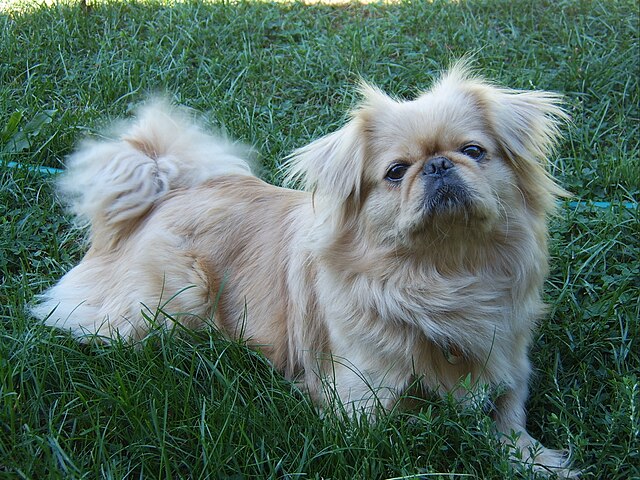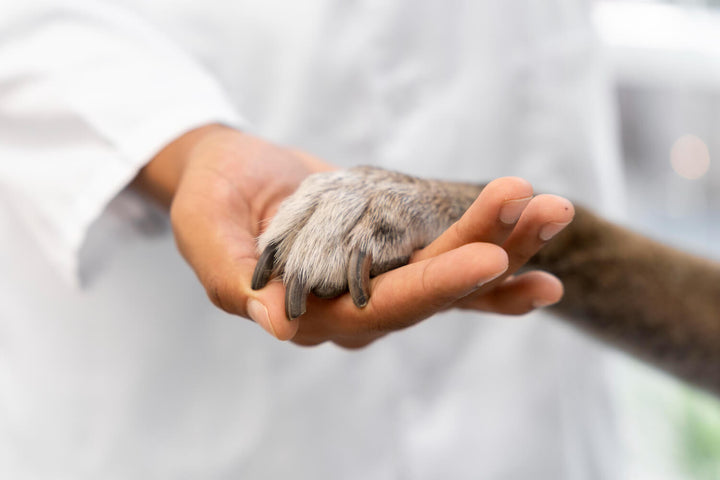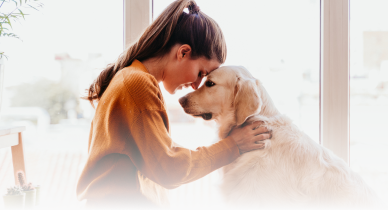Nestled in the annals of canine history, the Pekingese, also known as the Lion Dog, is a breed that exudes elegance and charm. With its regal appearance and enigmatic personality, the Pekingese has captured the hearts of dog enthusiasts around the world. In this comprehensive guide, we delve into the captivating world of the Pekingese, uncovering their unique traits, intriguing history, and the joy they bring to families.
Did You Know these Facts about the Pekingese?
-
The Pekingese hails from ancient China, dating back over 2,000 years. They were bred to resemble Chinese lions, which were symbols of bravery and strength.
-
These small dogs were beloved by Chinese emperors and were often kept in the Forbidden City. Commoners were forbidden from owning Pekingese, and the penalty for stealing one was death.
-
Despite their diminutive size, Pekingese have a fearless disposition. They were bred to be lion-like in courage, and they take their role as protectors seriously.
-
Luxurious Mane: Their flowing mane of fur around the neck isn't just for show. It served as insulation in the cold palaces of ancient China.
- Pekingese dogs have remained a symbol of Chinese heritage and pride. They are also cherished pets in many other parts of the world, including the United States.
The Pekingese, with its captivating looks and captivating history, enjoys a respectable level of popularity among formally registered breeds; in fact, it reached position #96 in the AKC's 2022 popularity list. While it may not rival the likes of Retrievers or Bulldogs, Pekingese enthusiasts are passionate about preserving the breed's unique characteristics and heritage. Their rarity only adds to their appeal, attracting those who appreciate the charm of a truly distinctive breed.

Traits of the Pekingese Breed
Personality. Pekingese dogs are known for their independent and dignified nature. They are often described as "big dogs in small bodies" due to their confidence and self-assuredness. Despite their regal demeanor, they are also affectionate and loyal to their families.
Family Life. Pekingese are excellent family pets, especially for households with older children. They are not typically recommended for families with very young children due to their small size and delicate build. They thrive in a calm and loving environment.
Physical Appearance. Pekingese are small dogs with a distinctive appearance. They have a stocky, low-to-the-ground body with a flowing, luxurious double coat that comes in various colors and markings. Their pushed-in faces and bulging eyes are endearing features.
Sociability. Pekingese can be reserved with strangers, and early socialization is crucial to ensure they are well-adjusted and confident in different situations. They often form strong bonds with their owners and can be quite protective.
Average Sizes & Life Expectancy
- Height: 6 to 9 inches tall (15 to 23 cm)
- Weight:7 to 14 pounds (3 to 6 kg)
- Life Expectancy: Around 12 to 14 years
Detailed Description of the Pekingese Breed
Physical Appearance. The Pekingese, with its distinctive appearance, stands out in the canine world. This breed is characterized by its small size, compact body, and a luxurious double coat. Pekingese typically weigh between 7 to 14 pounds and stand 6 to 9 inches tall at the shoulder.
One of the most striking features of the Pekingese is its regal mane of fur around the neck, resembling a lion's mane. This majestic mane frames their expressive face, which features a short, flat muzzle and large, round, dark eyes. Their ears are heart-shaped and lie flat against their head, adding to their endearing appearance.
Pekingese coats come in various colors and markings, with common colors including gold, red, black, sable, and cream. Their coats are long, straight, and flowing, requiring regular grooming to maintain their splendor.
Temperament and Personality. Pekingese dogs are renowned for their unique blend of confidence and independence. They often display a dignified and regal demeanor, as if they are aware of their royal heritage. Despite their small stature, they possess a fearless spirit and can be quite protective of their loved ones.
Pekingese are known for forming strong bonds with their families and can be quite affectionate and loyal. However, they can also be somewhat reserved with strangers, making early socialization crucial to ensure they are well-adjusted and comfortable in different situations.
Adaptability. The Pekingese's adaptability depends largely on their upbringing and early experiences. With proper socialization, they can thrive in various environments, from city apartments to suburban homes. They are generally not recommended for families with very young children due to their delicate size.
Pekingese are excellent companions for individuals and families who appreciate their unique personality and appearance. They thrive in homes where they receive the love and attention they crave. Due to their small size, they are well-suited for indoor living, but they also enjoy spending time outdoors, provided it's not too hot or cold.
This breed's adaptability makes them suitable for both experienced dog owners and first-time pet parents. Their low activity level means they do not require vigorous exercise but do enjoy short walks and playtime.
Care Guidelines. Pekingese have a high-maintenance coat that requires regular grooming. Daily brushing is recommended to prevent matting and keep their fur in top condition. Due to their pushed-in faces, they are prone to tear staining, so regular cleaning of the eye area is necessary.
Like all breeds, Pekingese are prone to certain health issues. Some common concerns include brachycephalic syndrome (breathing difficulties due to their flat faces), eye conditions, dental problems, and joint issues. Regular vet check-ups and a nutritious diet are essential for their well-being.
Training Strategies. Pekingese can be independent and stubborn, so early and consistent training is important. Positive reinforcement methods work best with this breed. They respond well to treats and praise, but harsh or forceful training methods can lead to resistance.
Notable in History. The Pekingese's history is intertwined with Chinese royalty, dating back over 2,000 years. They were bred to resemble Chinese lions, which were symbols of bravery and strength. These small dogs were cherished by Chinese emperors and were often kept in the Forbidden City.
What about Pop Culture? In pop culture, Pekingese have made appearances in various movies and television shows. They continue to be symbols of Chinese heritage and are admired for their regal and charming presence.
The Pekingese is a breed that encapsulates history, charm, and a dash of royal elegance. Their distinctive appearance and unique personality make them a beloved companion for those who appreciate their captivating presence.
What to expect when living with the Pekingese Breed
Personality. Pekingese dogs are known for their unique blend of traits that can make them delightful companions. They exude confidence and independence, often carrying themselves with an air of regal dignity. Despite their small size, they possess a fearless spirit and can be quite protective of their loved ones. Pekingese are also known for their loyalty and affection towards their families. They tend to form strong bonds and can be very loving, making them wonderful lapdogs and cuddle buddies.
However, it's important to note that Pekingese can also be somewhat reserved or aloof with strangers. Early socialization is key to ensuring they are well-adjusted and comfortable around new people and situations. With the right upbringing, they can be charming, affectionate, and even a bit comical, bringing joy to their households.
Ideal Environment. Pekingese are well-suited for various living environments. Their small size and adaptability make them suitable for apartment living, provided they get enough indoor exercise and short daily walks. They are also comfortable in suburban or rural settings, enjoying the company of their families in a calm and relaxed atmosphere.
Maintenance Level. Pekingese are considered a high-maintenance breed due to their distinctive coat and specific grooming needs. Their long, flowing double coat requires daily brushing to prevent matting and tangles. Additionally, regular baths and thorough drying are essential to maintain their coat's health and appearance.
Overall Health Expectations and Best Health Tests for the Pekingese Breed
Health Considerations. Pekingese, like many purebred dogs, can be prone to certain health issues. While not all Pekingese will experience these problems, it's important for potential owners to be aware of common health concerns associated with the breed:
- Brachycephalic Syndrome: Due to their flat faces, Pekingese can have brachycephalic traits, leading to breathing difficulties. Owners should be vigilant about avoiding overheating and strenuous exercise in hot weather.
- Eye Conditions: Pekingese are susceptible to various eye conditions, including progressive retinal atrophy (PRA), cataracts, and dry eye.
- Dental Problems: Their small mouths can lead to dental crowding, increasing the risk of periodontal disease.
- Joint Issues: Pekingese may be prone to orthopedic problems such as luxating patellas (dislocated kneecaps).
- Heart Disease: Heart murmurs and congestive heart failure are concerns in some Pekingese.
Recommended Health Tests. Potential Pekingese owners should choose a responsible breeder who conducts health screenings on their breeding dogs to minimize the risk of genetic health problems. Health tests that may be recommended for Pekingese include eye examinations, cardiac evaluations, and genetic tests for PRA.
Best Nutrition, Diet & Supplements for the Pekingese Breed
Nutrition and Diet. Opt for high-quality commercial dog food that is appropriate for small breeds. Look for options that list a high-quality protein source, such as chicken, beef, or fish, as the first ingredient. Avoid dog foods that contain fillers like corn, wheat, or soy, as Pekingese can be sensitive to these ingredients. Aim for a protein content of around 20-30% in their food.
Determining the appropriate amount of food to feed your Pekingese depends on factors like age, activity level, and individual metabolism. It's crucial to monitor your dog's weight and adjust their portion sizes accordingly to prevent obesity, which can be a concern for this breed.
As a general guideline, an adult Pekingese weighing around 8 to 14 pounds may require approximately 1/2 to 1 cup of high-quality dry dog food per day, divided into two meals. However, it's essential to consult with your veterinarian to establish a specific feeding plan tailored to your dog's needs.
Hydration is Key. Adequate hydration is essential for Pekingese dogs. Encourage your dog to drink plenty of fresh water.
Supplements. Glucosamine and Chondroitin - These supplements support joint health and can be beneficial. Omega-3s help maintain healthy skin and coat, reduce inflammation, and support heart health. Fish oil supplements are a good source.
Foods to Avoid. Grapes and raisins can cause kidney damage. Chocolate contains theobromine, which is toxic to dogs. Onions and garlic can lead to digestive upset and even be toxic in large quantities. Cooked bones can splinter and cause choking or injury.
Grooming Requirements for the Pekingese Breed
Coat Maintenance and Shedding. Pekingese have a long, flowing double coat. The outer coat is long, coarse, and straight, while the soft undercoat provides insulation. Pekingese are moderate shedders throughout the year, with heavier shedding occurring in the spring and fall. Regular brushing helps reduce loose hair and minimizes shedding.
Daily brushing is recommended to prevent matting and tangles, especially in the profuse mane and feathering on their legs. Use a pin brush or slicker brush to reach the undercoat.
Paw Care and Hygiene. Check their paws regularly for debris, mats, or foxtails. Trim the hair between the paw pads to prevent dirt accumulation and matting.
Ears and Eyes. Pay special attention to their facial wrinkles, as they are prone to moisture buildup and skin infections. Gently clean the wrinkles daily with a damp cloth and ensure they are thoroughly dried to prevent infections. Pekingese have prominent eyes that can be prone to tear staining. Wipe their eyes daily to prevent staining and keep the area clean. Check their ears weekly for signs of infection, wax buildup, or pests. Clean their ears with a dog-specific ear cleaner as needed.
Bathing Frequency. Bathe your Pekingese every 4-6 weeks or as needed. Use a gentle dog shampoo to maintain their coat's natural oils and avoid skin irritation.
Exercise Required for the Pekingese Breed
Pekingese dogs enjoy daily walks, but they don't require long or vigorous exercise. Two short walks of about 15-20 minutes each day should suffice. Engage in interactive play sessions with toys, such as fetch or tug-of-war, to provide mental
Pekingese dogs adapt well to indoor living, making them suitable for apartment dwellers. Interactive puzzle toys can keep their minds active. Be cautious not to overexert your Pekingese, especially in hot weather, as their short noses can make them susceptible to heatstroke.
While not overly social, Pekingese should still be exposed to various people and situations to prevent shyness or fearfulness.
Training Tips for the Pekingese Breed
Training a Pekingese can be a rewarding experience due to their intelligence and eagerness to please.
Do…
-
Use positive reinforcement techniques such as treats, praise, and affection to motivate your Pekingese during training.
-
Be consistent with commands, rules, and boundaries. Pekingese dogs respond well to routines.
-
Begin socializing your Pekingese puppy early to ensure they are well-adjusted and comfortable around people and other animals.
-
Be patient and understanding, as Pekingese may have a stubborn streak.
Don't…
-
Use rough or heavy-handed training techniques, as Pekingese dogs are sensitive and can become fearful or defensive.
-
Put them through Lengthy Training Sessions: Keep training sessions short and engaging to prevent boredom. Pekingese have a limited attention span.
-
Don't overfeed them. Avoid overfeeding your Pekingese, as excess weight can lead to health issues. Stick to a balanced diet and monitor their weight.
- Skip socialization: Neglecting early socialization can lead to behavioral problems. Expose your Pekingese to various environments, people, and experiences.
The Pekingese Breed is Suitable For
Pekingese dogs are ideal for apartment dwellers. Their small size and relatively low activity level make them well-suited for living in smaller spaces. However, daily walks and playtime are still essential to keep them healthy and happy.
They can be a great addition to families with children, but early socialization is crucial. They are generally patient and affectionate with kids but may have a low tolerance for rough handling.
Pekingese dogs make excellent companions for singles and seniors. Their loyalty and affectionate nature provide comfort and companionship. These dogs are a perfect fit for retirees looking for a loyal and loving companion. Pekingese dogs enjoy a relaxed lifestyle, making them great for those with more time to devote to their pets.
Pekingese can get along with other pets, including cats, if introduced and socialized properly. Supervision is advisable when introducing them to other animals.
The Pekingese Breed is Not Suitable For
Pekingese dogs are not known for their athleticism and may not enjoy rigorous outdoor activities. They prefer a more relaxed pace, making them less suitable for families with active outdoor lifestyles.
Due to their small size and delicate build, Pekingese may not do well in homes with large, energetic dogs that could inadvertently harm them during play. Although Pekingese can be great with children, their small size makes them vulnerable to unintentional rough handling, so they may not be the best choice for homes with very young kids.
Pekingese dogs thrive on companionship and may suffer from separation anxiety if left alone for extended periods. Homes with owners who are frequently away may not be ideal.
Famous Pekingese Owners
-
Queen Victoria - Queen Victoria of England had a deep affection for Pekingese dogs. She owned several of them and played a significant role in popularizing the breed in Europe during the late 19th century.
-
Elizabeth Taylor - The legendary actress Elizabeth Taylor was a Pekingese enthusiast. She owned several Pekingese dogs throughout her life, and one of her beloved Pekes, named Sugar, even appeared in the film "The Sandpiper" alongside her.
- Mariah Carey - The iconic singer Mariah Carey is known for her love of Pekingese dogs. She has been the owner of multiple Pekingese pets, demonstrating her affection for the breed.
Accomplishments of the Pekingese Breed
Pekingese were the cherished companions of Chinese emperors for centuries, and they were considered sacred and kept in the Forbidden City. Their regal history adds to their allure.
Pekingese dogs have a remarkable track record at the Westminster Kennel Club Dog Show, often securing top honors and Best in Show titles.
These dogs have made appearances in various movies and television shows. Their distinctive appearance and charming personalities have made them popular choices for on-screen roles.
Above all, Pekingese dogs are celebrated for their unwavering loyalty and loving nature, making them cherished pets for countless families worldwide. Whether in the company of royalty or in the hearts of celebrities, the Pekingese breed has left an indelible mark on history and continues to capture the affection of dog enthusiasts globally.
The History of the Pekingese Breed
Creation and Purpose. The Pekingese, also known as the "Lion Dog" or "Peking Palaces Dog," hails from ancient China, with a history dating back over 2,000 years. This breed was developed in the Imperial courts of China, where it was selectively bred to be a companion to Chinese royalty and nobility.
The Pekingese's primary purpose was to serve as a loyal and devoted companion to the Chinese imperial family. Its unique appearance, with a lion-like mane and regal demeanor, symbolized the guardian lions in Chinese mythology. These dogs were not just pets but also revered protectors of the royal palaces, believed to bring good luck and ward off evil spirits.
During the Tang Dynasty (618-907 AD), Pekingese dogs were already held in high esteem, but their popularity soared during the rule of the Tang Empress Dowager Cixi (late 19th century). Empress Dowager Cixi was known for her deep affection for Pekingese dogs, and she played a significant role in preserving the breed during a tumultuous period in China's history.
Early Roles and Evolution. The Pekingese faced several challenges throughout history, including the Boxer Rebellion and the siege of the Old Summer Palace in 1900, where many were lost. After these events, the breed's population was replenished with dogs gifted to Westerners who sympathized with the Chinese imperial family's plight. These Westerners played a crucial role in introducing Pekingese to the rest of the world.
Changes and Modern Impact. Today, the Pekingese continues to be a beloved companion animal worldwide. While no longer confined to the imperial palaces of China, they still retain their regal and dignified demeanor. In the modern era, they are cherished for their distinctive appearance, loyalty, and charming personalities.
The journey of the Pekingese from the palaces of ancient China to homes across the globe is a testament to the enduring appeal and historical significance of this breed. They are a living link to a bygone era and a reminder of their role as cherished companions and protectors in the courts of emperors and empresses.
The Pekingese Breed Standard
The Pekingese is classified under the Toy Group by the American Kennel Club (AKC). This group includes small breeds cherished for their companionship and suitability for indoor living.
The AKC's formal Breed Standard for the Pekingese provides a detailed description of the ideal Pekingese. According to this standard, Pekingese are well-balanced, compact dogs with a distinctive appearance. Their head is large in proportion to the body, with a flat face and a pushed-in nose. They have dark, expressive eyes and a lion-like mane of hair around the neck.
The Pekingese Club of America (PCA) is the national breed club dedicated to preserving and promoting the Pekingese breed. For more information, you can visit their website at Pekingese Club of America.
General Appearance
Head. The Pekingese is characterized by a distinctive head that is one of its most striking features. It is large in proportion to the body, giving the breed its regal and noble appearance. The skull is broad, flat, and wide between the ears, forming a square shape when viewed from the front. The eyes are dark, large, and expressive, set wide apart and slightly bulging. They are surrounded by a pronounced black mask, which adds to the breed's unique facial expressions. The ears are heart-shaped, set low, and heavily feathered, framing the face elegantly.
Muzzle and Nose: The muzzle of the Pekingese is flat and broad, adding to its distinctive appearance. It is relatively short, and the nose is black. The flattened muzzle, also known as "brachycephalic," is a hallmark of this breed.
Teeth. Pekingese dogs typically have a scissor bite, with their upper incisors slightly overlapping the lower ones. Dental care is important for Pekingese due to their brachycephalic nature, which can sometimes lead to dental issues. Regular tooth brushing and dental check-ups are essential to maintain their oral health.
Neck. The Pekingese has a relatively short, thick neck that carries the lion-like mane of hair, contributing to its majestic appearance. The neck is well-muscled, providing strength and stability to support the breed's distinct head.
Body. The body of the Pekingese is compact, solid, and well-balanced. They have a sturdy, broad chest and a level back. Their ribcage is deep and well-sprung, providing ample space for lung capacity. The breed's body is low to the ground, with short, strong legs that have well-boned, straight forearms and muscular hindquarters.
Tail. Pekingese have a high-set tail that arches gracefully over their back, creating a plume-like effect. The tail is heavily plumed with a profusion of long, silky hair. It adds to the breed's regal appearance and elegance.
Coat. The Pekingese is renowned for its luxurious double coat. The outer coat is long, straight, and coarse, while the undercoat is soft and thick. This double coat provides insulation and protection. The coat can come in various colors, including solid black, cream, fawn, or a combination of these colors. Grooming the coat is essential to prevent matting and maintain its beautiful appearance.
Size. Pekingese are a small breed, and their size is an essential characteristic. They typically stand between 6 to 9 inches (15 to 23 cm) at the shoulder and weigh between 7 to 14 pounds (3 to 6 kg). This compact size makes them an ideal choice for indoor living.
Gait. The Pekingese has a unique and distinctive gait. Their movement is deliberate, with a rolling, dignified walk. Their small size and sturdy build give them a low center of gravity, resulting in a characteristic shuffle-like gait. Despite their diminutive size, Pekingese move with grace and pride, befitting their regal heritage.
Reputable Breeders
For those seeking a well-bred Pekingese, there are reputable breeders who prioritize health, temperament, and the breed's standard. Here are a few notable breeders:
Top Shelters for Adoption
Adopting a dog can be a rewarding experience. Here are a few shelters where you might find a Pekingese in need of a loving home:
Top 5 Frequently Asked Questions & Answers about the Pekingese Breed
Are Pekingese good with children?
Pekingese can be good with well-behaved, gentle children, but they prefer a calm environment.
Do Pekingese shed a lot?
Yes, Pekingese shed moderately. Regular grooming can help manage their shedding.
Are Pekingese good apartment dogs?
Yes, Pekingese are well-suited for apartment living due to their small size and low activity level.
Do Pekingese require a lot of grooming?
Yes, their long coat needs regular grooming to prevent matting and maintain their appearance.
Are Pekingese easy to train?
Pekingese are intelligent but can be independent. Patient, consistent training works best.
A Final Tip for Bringing a Pekingese into Your Life
Bringing a Pekingese into your life can be a rewarding experience. These dogs are known for their loyalty, regal demeanor, and unique charm. However, potential owners should be prepared for their grooming needs and be aware of their sensitivity to heat. With proper care and attention, a Pekingese can make a wonderful companion, adding a touch of royalty to your life.
Valuable Resources for Your Journey to Parenting a Pekingese
At Felicitails you will find many wonderful services, supplies and guides for your life ahead with a loving pup at your side.

Hope You Enjoyed The Read!
Tag Cloud

A warm welcome from Lindsay & Huck (my English Pointer). Hope you enjoy the read and find just what you are looking for when it comes to living your best life with your loved pets.

-
Dog Breeds
(42)
-
Emotional Support Animals
(10)
-
Dog Grooming
(6)
-
Dog Health
(18)
-
Life with a Dog
(18)
-
Dog Nutrition
(11)
-
Service Animals
(11)
-
Dog Training
(5)







